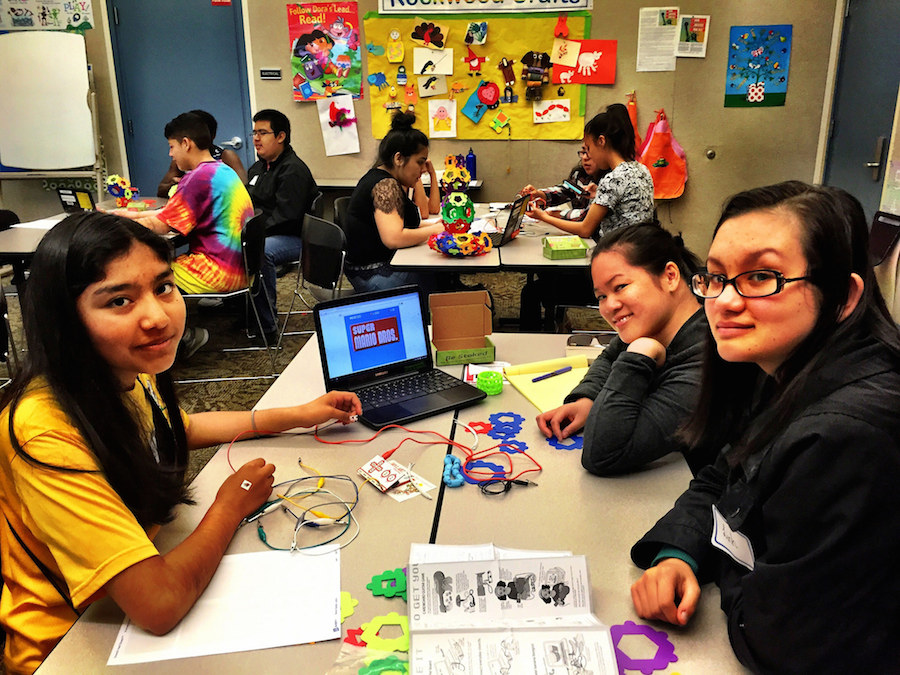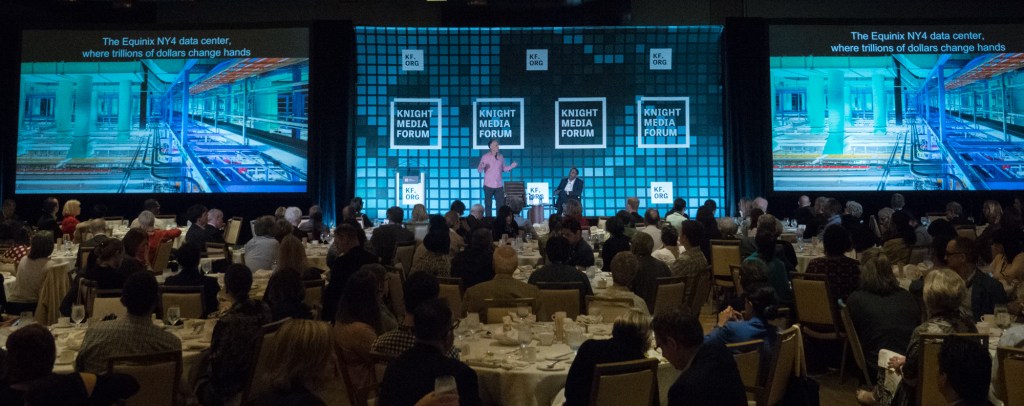
Aspen Institute report explores how libraries can nurture innovation and build stronger communities
- Above: Wiring a Super Mario Bros. game controller in a community maker space at Rockwood Library in Multnomah County, Oregon. Credit: Multnomah County Library on Flickr.
Amy Garmer is director of the Aspen Institute Dialogue on Public Libraries.
What happens if you shift the library to be the center of the community platform for innovation?
Thirty dynamic leaders and innovators from the public and private sectors – all involved in re-envisioning the ways in which public libraries can adapt to the new needs of communities in the 21st century – joined my Aspen Institute colleagues and me at our Aspen Meadows campus in Colorado last August to explore answers to this question. Our three-day conversation included six senior staff members of Knight Foundation, whose grant to the Aspen Institute Dialogue on Public Libraries made the conference possible.
Key insights from our deliberations and recommendations for delivering on the promise of libraries transforming communities are available in a new report released today at the American Library Association Midwinter Meeting in Boston. “Libraries in the Exponential Age: Moving From the Edge of Innovation to the Center of Community” (available at libraryvision.org) starts with a few basic facts about how innovation occurs.
First, innovation mostly occurs at the edges of institutions. The challenge is to find pathways for new ideas and practices to move toward the center of the institution.
Second, innovation is a team sport. Breakthroughs emerge from having the right people interacting in the right ecosystem.
Third, cultures of innovation are shaped by members who bring the diverse perspectives and experiences of the tribes they come from: designers, geeks, artists, tinkerers, engineers, writers, business persons, teachers, librarians.
While many libraries have yet to reach their full potential and have a wider impact as hubs for community innovation, nearly all public libraries have the key markers necessary to infuse innovation into the library’s DNA. Librarians in collaboration with partners from these other tribes can create the right ecosystems for innovation and pathways to pull new information, ideas and opportunities into the center of communities by doing the following:
• Taking new approaches to developing and managing the human infrastructure of public libraries. For example, libraries can hire more “X-shaped” people. These are people who have expertise in two areas of endeavor, with special insight and ability to operate at the intersection of the two. Give the workforce permission, space, funding and tools to innovate.
• Taking new approaches to developing and managing the physical and technological infrastructure of public libraries. Take advantage of federal e-rate and other funding opportunities to build superconnectivity, but don’t lose sight of new technologies on the horizon. Artificial intelligence is one technology that will have a significant effect on information use, knowledge creation and the work that libraries do. What are libraries doing about it?
• Reimagining the problems that libraries are helping to solve. Information access is still a critical need, but there are other critical societal needs that libraries can be stronger partners in solving such as closing gaps in wealth, civic participation and education. The new report proposes three innovative strategies for addressing these gaps, including: a proposal to create superconnectivity at libraries; an initiative for a network of libraries to create a national civic square for public dialogue and citizenship; and an App-Library proposal to demonstrate how libraries can build on existing resources to facilitate richer learning opportunities outside of formal education.
Identifying priorities for today and tomorrow and letting outdated services from yesterday fade away are important, if difficult, tasks for libraries and their communities. Communities that build upon the strong foundation public libraries have established already, and infuse innovation into the DNA of their public libraries, will accelerate progress toward reaching their full potential and deliver on the promise of public libraries today and for future generations.
Contact Amy Garmer via email at [email protected].
Recent Content
-
Artsarticle ·
-
Artsarticle ·
-
Community Impactarticle ·


